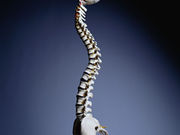Neither manipulation nor functional therapy affects pain, quality of life, or spinal mobility
WEDNESDAY, April 20, 2016 (HealthDay News) — Spinal manipulative therapy reduces disability from low back pain (LBP) more than functional technique, but not in a clinically meaningful way, according to a study published in the March issue of The Spine Journal.
Adelaida María Castro-Sánchez, P.T., Ph.D., from the University of Almeria in Spain, and colleagues compared the effective of spinal manipulation or functional technique (three once-weekly sessions) on pain, disability, kinesiophobia, and quality of life in 62 patients with chronic LBP.
The researchers found that patients receiving spinal manipulation experienced statistically, although not clinically, significant greater reductions in terms of disability. Over time, both groups showed significant improvement for the Roland-Morris Disability Questionnaire (both groups P < 0.001) and Oswestry Low Back Pain Disability Index (both groups P < 0.001). However, for pain intensity (P = 0.488), Tampa Scale of Kinesiophobia (P = 0.552), any domains of the Short Form-36 quality-of-life questionnaire (P ≤ 0.164), isometric resistance of abdominal muscles (P = 0.512), and finger-to-floor distance (P = 0.194), there were no significant treatment-by-time interactions.
“As neither group met the threshold for minimum clinically important difference following treatment, neither treatment resulted in a clinically meaningful benefit,” the authors write.
Copyright © 2016 HealthDay. All rights reserved.








